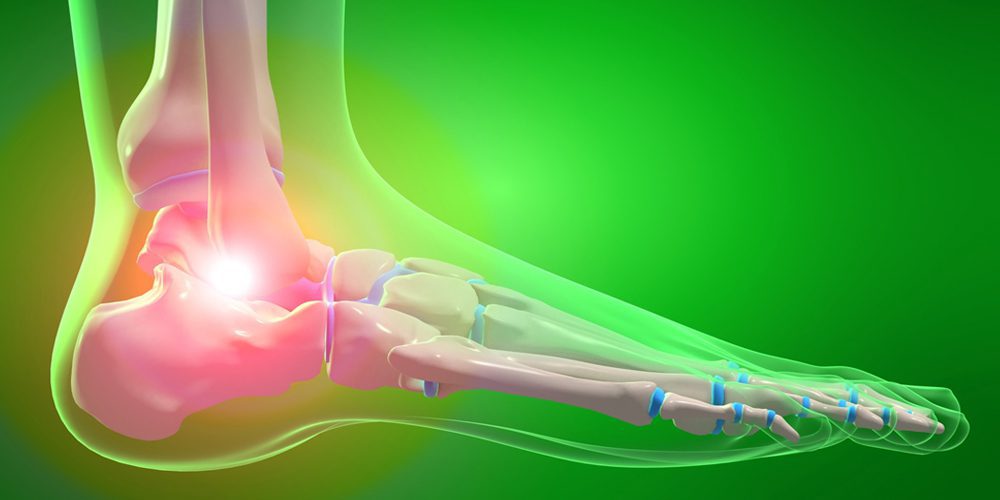Plantar fasciitis is a common foot condition characterized by inflammation and pain in the plantar fascia, a thick band of tissue that connects the heel bone to the toes. It often causes stabbing pain in the heel, especially with the first few steps in the morning or after prolonged periods of rest.
This condition affects millions of people worldwide and can significantly impact one’s daily activities and quality of life. The plantar fascia acts as a shock absorber, supporting the arch of your foot while walking or running.
When exposed to excessive stress, small tears can develop in the tissue, leading to inflammation and pain. Flat feet, high arches, improper footwear, overuse, obesity, and certain activities that put strain on your feet (such as running or dancing) are all common risk factors for developing plantar fasciitis.
Importance of massage as a non-invasive treatment option
Massage therapy has gained recognition as an effective non-invasive treatment option for managing plantar fasciitis. Unlike invasive procedures or medications that may have side effects, massage offers a natural approach to relieving pain and promoting healing.
Massage helps alleviate discomfort by targeting key areas affected by plantar fasciitis. By applying gentle pressure and specific techniques to release tension in the foot muscles and improve blood circulation in the affected area, it can reduce inflammation and promote faster healing.
Moreover, regular massage sessions can help prevent future injuries by improving flexibility, reducing muscle tightness, and enhancing overall foot health.
It is important to note that massage therapy should not replace medical advice or treatments prescribed by healthcare professionals but can complement them as part of a comprehensive treatment plan. When combined with other conservative treatments like stretching exercises, orthotic shoe inserts, and rest, massage can be a valuable tool in managing plantar fasciitis. It not only provides physical relief but also offers a relaxing and therapeutic experience, promoting a sense of well-being and stress reduction.
In the upcoming sections of this article, we will delve deeper into the benefits of massage for plantar fasciitis and explore various techniques that can be employed to provide effective relief. So, let’s get ready to put your feet up and discover the wonders of plantar fasciitis massage!
Anatomy of the Foot and the Role of the Plantar Fascia
The human foot is an intricate structure, composed of bones, muscles, tendons, and ligaments that work harmoniously to support our body weight and facilitate movement. At the core of this remarkable mechanism lies a band of connective tissue known as the plantar fascia.

The plantar fascia spans from the heel bone (calcaneus) all the way to the base of each toe, forming the arch on the underside of our feet. Imagine this fascia as a sturdy bowstring that helps maintain the arch shape while providing stability during walking or running.
It acts like a shock absorber, distributing forces evenly across our feet and absorbing impact when we take each step. Without a healthy plantar fascia, our feet would struggle to bear weight efficiently and effectively.
Causes and Risk Factors Associated with Developing Plantar Fasciitis
Plantar fasciitis is not something that appears out of thin air; it often results from a combination of factors. The most common cause is overuse or repetitive strain on the plantar fascia due to activities like running or standing for prolonged periods.
Athletes who engage in high-impact sports are particularly prone to developing this condition. Other factors can also contribute to plantar fasciitis.
Some individuals have naturally flat feet or excessively high arches, which may create an uneven distribution of force on their feet during movement. Obesity can also increase stress on the plantar fascia since it has to bear more weight than usual.
Additionally, tight calf muscles or Achilles tendons can place added strain on the plantar fascia by altering our natural gait pattern. Wearing improper footwear lacking adequate support or cushioning can exacerbate this condition further.
Risk factors for developing plantar fasciitis include being between 40-60 years old, as the plantar fascia tends to lose elasticity and becomes less resilient with age. Certain occupations that involve extensive walking or standing on hard surfaces, such as teachers or factory workers, can also increase the risk.
By understanding the anatomy of the foot and recognizing the causes and risk factors associated with developing plantar fasciitis, we gain valuable insights into managing and preventing this condition. In the upcoming sections, we will delve deeper into effective massage techniques and self-care tips that can bring relief to those experiencing plantar fasciitis pain.
The Benefits of Massage for Plantar Fasciitis
Living with plantar fasciitis can be an agonizing experience. The sharp, stabbing pain in the heel or arch can make even simple activities a challenge.
Thankfully, massage therapy offers a ray of hope in diminishing this discomfort. By targeting the affected area, massage promotes pain relief by releasing endorphins, our natural “feel-good” hormones.
These endorphins help to alleviate the intensity of pain signals being sent to the brain, providing much-needed relief to those suffering from plantar fasciitis. Furthermore, massage therapy aids in reducing inflammation that often accompanies this condition.
The skilled hands of a massage therapist can effectively stimulate blood flow to the affected area, flushing out toxins and increasing oxygen supply to damaged tissues. This boost in circulation helps reduce swelling and accelerates the healing process by supplying vital nutrients and immune cells to aid tissue repair.
Improved Blood Circulation and Tissue Healing
The plantar fascia depends on robust blood circulation for optimal health and function.
Unfortunately, with plantar fasciitis, this essential blood flow may be compromised due to inflammation or tight muscles surrounding the foot. Massage therapy comes to the rescue yet again by enhancing blood circulation throughout the foot region.
Through various techniques such as kneading and applying pressure on specific points along the feet, massage stimulates vasodilation—widening of blood vessels—allowing for increased blood flow. This surge of oxygen-rich blood brings vital nutrients that aid in repairing damaged tissues while simultaneously removing waste products that hinder healing.
Moreover, improved circulation supports cellular metabolism within the foot’s soft tissues, promoting faster tissue regeneration and reducing recovery time. So if you’re seeking an effective way to speed up the healing process, massage therapy for plantar fasciitis is a step in the right direction.
Relaxation and Stress Reduction
In addition to its physical benefits, massage therapy offers a much-needed respite from the stress and tension that often accompanies living with plantar fasciitis.
The calming touch of a skilled therapist’s hands can have profound psychological effects, inducing deep relaxation and reducing anxiety. The gentle strokes and rhythmic movements used in massage stimulate the parasympathetic nervous system, which is responsible for regulating our body’s natural relaxation response.
As stress melts away, muscle tension diminishes, allowing for improved flexibility and increased range of motion in the foot. Furthermore, by creating a tranquil experience during a massage session, individuals with plantar fasciitis can find solace from their daily struggles with pain.
This therapeutic escape not only provides relief during treatment but also helps build mental resilience to manage ongoing discomfort outside of therapy sessions. So why continue enduring the burdensome weight of stress when you can lighten your load through the power of massage?
Techniques for Plantar Fasciitis Massage
Before diving into the actual massage techniques, it’s crucial to warm up your foot muscles properly. This helps improve blood circulation, loosen up tight tissues, and enhance the overall effectiveness of the massage. One excellent warm-up exercise is toe stretches.
Sit on a chair, cross one leg over the opposite knee, and gently pull each toe back, holding for about 10 seconds. Repeat this stretch with each toe individually.
Another beneficial warm-up exercise is ankle rotations. While seated or standing, rotate your ankle in a circular motion both clockwise and counterclockwise.
This helps increase mobility in your ankle joint and loosens up any tension in the surrounding muscles. Calf stretches are also essential before starting a plantar fasciitis massage session.
Stand facing a wall with your hands placed against it at shoulder height. Take one step forward with your affected foot and keep your heel firmly on the ground while bending your knee slightly forward.
You should feel a gentle stretch in your calf muscle. Hold this position for about 30 seconds and then switch legs.
Rolling a tennis ball or frozen water bottle under the foot
Using either a tennis ball or a frozen water bottle can be highly effective in relieving plantar fasciitis pain through self-massage. Simply place the ball or bottle under your affected foot and roll it back and forth from heel to toe for several minutes.
The tennis ball provides targeted pressure that helps stimulate blood flow to the area while loosening tight knots in muscles surrounding the plantar fascia tendon. The cold temperature provided by using a frozen water bottle can also help reduce inflammation and provide temporary relief from pain.
Manual massage techniques targeting the plantar fascia
When it comes to manual massage techniques, there are a few options that specifically target the plantar fascia and provide relief. Deep tissue massage is one such technique where you use your thumbs or knuckles to apply firm pressure along the length of the plantar fascia. Start at the heel and move towards the toes, focusing on any areas of tightness or tenderness.
Another effective technique is cross-friction massage, which involves applying perpendicular pressure to the plantar fascia. This helps break up scar tissue and adhesions that may have formed, promoting healing and reducing pain.
In addition to these techniques, stretching exercises can also be incorporated into your massage routine. Dorsiflexion stretches involve pulling your toes upwards towards your shin to stretch the plantar fascia and calf muscles gently.
Toe extension stretches involve gently pulling your toes backward to stretch the top of your foot. By incorporating these various manual massage techniques into your routine, you can target specific areas of tension in the plantar fascia while improving flexibility and promoting healing.
Remember, consistency is key with any massage technique for plantar fasciitis relief. Regular practice combined with proper warm-up exercises will help maximize the benefits and alleviate symptoms over time.
Self-Massage Tips for Plantar Fasciitis Relief
Using a foam roller or massage ball on the affected area
When it comes to self-massage for plantar fasciitis relief, using a foam roller or massage ball can be incredibly effective. These tools can help target the specific areas of your foot that are causing discomfort and provide much-needed relief.
Foam rollers are long, cylindrical devices made of dense foam, while massage balls are small, often rubbery balls that offer targeted pressure. Both options work wonders in releasing tension and promoting healing.
Applying gentle pressure while rolling back and forth
To get started with self-massage using a foam roller or massage ball, begin by sitting comfortably with the affected foot bare. Place the foam roller or massage ball beneath your foot and apply gentle pressure by shifting your weight onto it.
Once you have found an area of tension or discomfort, start rolling back and forth slowly. As you roll, you may feel some discomfort or even mild pain—this is normal.

However, it’s crucial to remember not to overdo it; always stay within your comfort zone to avoid exacerbating the condition. Aim to roll for about 1-2 minutes per session initially and gradually increase the duration as your foot becomes accustomed to the pressure.
Focusing on trigger points along the arch
Within your plantar fascia lies several trigger points—specific spots that may elicit pain when pressed upon—that contribute to plantar fasciitis symptoms. By targeting these trigger points during self-massage sessions, you can help alleviate discomfort and promote healing. To focus on these trigger points along the arch of your foot, position yourself with either a foam roller or massage ball under your arch.
Apply moderate pressure using slow circular motions directly on these tender areas. It’s important not to rush through this process—take your time and pay close attention to any areas that feel particularly tight or painful.
By giving extra attention to these trigger points, you can help release tension and provide relief. Remember, consistency is key when it comes to self-massage for plantar fasciitis relief.
Set aside a few minutes each day to perform these techniques and pay close attention to how your foot responds. If you experience increased pain or discomfort during or after self-massage, it’s wise to consult with a healthcare professional for further guidance.
In the next section of our article, we will explore the importance of seeking professional help for plantar fasciitis massage and discuss alternative therapies such as reflexology and acupressure that may complement your self-care routine. Stay tuned!
Seeking Professional Help for Plantar Fasciitis Massage
Sometimes, self-massage techniques might not provide the desired relief for your plantar fasciitis. In such cases, seeking professional help from a licensed massage therapist can be a game-changer. These skilled practitioners possess in-depth knowledge of the human body and are specifically trained to address various musculoskeletal issues, including plantar fasciitis.
During your visit to a massage therapist, they will assess your condition by conducting a detailed consultation and examination of your feet. This process helps them understand the root causes of your plantar fasciitis and tailor their treatment approach accordingly.
They may use a combination of techniques such as deep tissue massage, myofascial release, and trigger point therapy to alleviate pain, reduce inflammation, and promote healing. One of the significant advantages of consulting with a licensed massage therapist is their ability to provide personalized care.
They can adapt their techniques based on factors like the severity of your condition, individual pain tolerance levels, and any other health concerns you may have. Furthermore, they can educate you on self-care practices that complement their treatments for long-term relief.
Considering Alternative Therapies like Reflexology or Acupressure
In addition to conventional massage therapy approaches, alternative therapies like reflexology or acupressure can also be considered as complementary treatments for plantar fasciitis. These modalities have been practiced for centuries and focus on stimulating specific pressure points in the body to promote healing.
Reflexology is based on the theory that certain areas of our feet correspond to specific organs or systems within our body. By applying pressure to these reflex points using thumb or finger techniques, reflexologists believe they can encourage better circulation and restore balance throughout the body.
Acupressure works along similar lines, but instead of focusing solely on the feet, it targets various meridian points throughout the body. These points are believed to be connected to channels of energy flow.
By pressing these points with fingers or specialized tools, acupressure aims to release tension and blockages in the energy pathways, promoting overall wellness. While these alternative therapies may not directly address plantar fasciitis, they can potentially alleviate associated pain and improve the body’s natural healing processes.
It is essential to consult with experienced practitioners who specialize in these therapies and have a thorough understanding of foot anatomy and related conditions like plantar fasciitis. Remember, seeking professional help for your plantar fasciitis does not mean dismissing self-care practices altogether.
In fact, a combination of professional assistance and self-massage techniques can work together synergistically to provide optimal relief and long-term management of this condition. When considering alternative therapies like reflexology or acupressure, keep an open mind and communicate clearly with your chosen practitioner about your specific symptoms and expectations.
This collaborative approach will help ensure you receive the most suitable care for overcoming the discomfort caused by plantar fasciitis. So go ahead; take that step towards professional assistance or explore alternative therapies – you deserve relief from plantar fasciitis’s nagging pain!
Precautions and Considerations
When it comes to treating plantar fasciitis through massage, it’s crucial to remember that gentle is the way to go. Applying excessive pressure or using aggressive techniques can potentially worsen the condition and cause more harm than good. While it may be tempting to go all-in and forcefully knead the affected area, it’s important to be patient and let the healing process take its course.
Remember, a gradual approach is key here. When performing self-massage, be mindful of your own strength and avoid exerting too much pressure on your foot.
Start with a light touch and gradually increase the intensity as tolerated. It’s better to err on the side of caution rather than risking further inflammation or pain.
Listening
Listening to your body is paramount during plantar fasciitis massage. Each individual’s pain tolerance and comfort levels may vary, so pay attention to any signals of discomfort or pain during the massage process.
If something feels uncomfortable or causes sharp pain, adjust your technique or discontinue immediately. Additionally, keep an open line of communication with your massage therapist if seeking professional help.
Inform them about any specific areas that are particularly sensitive or painful so they can tailor their approach accordingly. Remember, effective communication between you and your therapist will ensure a personalized treatment plan for optimal results.
Conclusion
Plantar fasciitis massage can be an effective non-invasive treatment option for alleviating pain, reducing inflammation, improving circulation, promoting relaxation, and facilitating tissue healing in individuals suffering from this condition. However, precautions must be taken to avoid excessive pressure or aggressive techniques that could potentially worsen symptoms. By approaching massage therapy with gentleness and mindfulness toward our body’s response signals, we can harness its benefits without causing further harm.
Whether you choose self-massage techniques or seek the help of a professional, always listen to your body and modify the intensity as needed. Remember, plantar fasciitis is a manageable condition, and with the right care and treatment, you can find relief and regain your mobility.
So take the time to incorporate massage into your routine, be patient with the healing process, and stay positive as you work towards healing. You’ve got this.





















